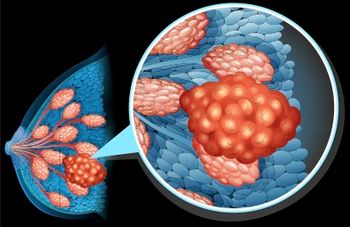
ASCO Updates Guideline on Management of HER2-Positive Breast Cancer
An update to guidelines from ASCO on the optimal management of patients with HER2+ breast cancer offers recommendations on timing and sequence of therapies.
The American Society of Clinical Oncology (ASCO) released an update to its guidelines on the optimal management of patients with HER2-positive breast cancer. The guidelines, which remain largely unchanged from an earlier version, offer recommendations on timing and sequence of therapies, among other topics.
“Clinicians should recommend HER2-targeted therapy–based combinations for first-line treatment, except for highly selected patients with estrogen receptor–positive or progesterone receptor–positive and HER2-positive disease, for whom clinicians may use endocrine therapy alone,” wrote members of an Expert Panel led by Sharon H. Giordano, MD, of the University of Texas MD Anderson Cancer Center in Houston, and Nancy E. Davidson, MD, of the Fred Hutchinson Cancer Research Center in Seattle.
The Expert Panel conducted a literature review and identified 622 relevant articles to HER2-positive breast cancer management. Outcomes of interest in the review included overall and progression-free survival, as well as adverse events. The results were
For first-line therapy, clinicians should offer a combination of trastuzumab, pertuzumab, and a taxane, unless the patient has a contraindication for taxanes. If a patient’s disease has progressed during or after first-line HER2-targeted therapy, trastuzumab emtansine should be recommended as a second-line treatment; if the cancer has progressed during or after second-line treatment but trastuzumab emtansine has not yet been offered, it can also be given in the third-line setting.
Pertuzumab can also be used as a third-line or greater treatment, if it has not yet been offered as a previous line of therapy. If both pertuzumab and trastuzumab emtansine have been given and the disease has progressed after second-line or greater treatment, third-line treatment can include lapatinib plus capecitabine, as well as other combinations of chemotherapy, trastuzumab, lapatinib and trastuzumab, or hormonal therapy in certain patients. At this point, there is not yet sufficient evidence to recommend one regimen over another in this later setting.
When patients are receiving a combination of chemotherapy and HER2-targeted therapy, the chemotherapy should be given for 4 to 6 months or longer, to the time of maximal response, depending on toxicity. The HER2-targeted therapies can continue after the chemotherapy is stopped.
If a patient received a HER2-targeted therapy plus chemotherapy, endocrine therapy can be added to this regimen when the chemotherapy ends and/or the cancer progresses. In certain special circumstances such as a low disease burden or presence of certain comorbidities, endocrine therapy can be offered alone.
In general, no new evidence has emerged to substantively change the 2014 ASCO guidelines on management of HER2-positive breast cancer. “ASCO believes that cancer clinical trials are vital to inform medical decisions and improve cancer care, and that all patients should have the opportunity to participate,” the authors concluded.
Newsletter
Stay up to date on recent advances in the multidisciplinary approach to cancer.


















































































